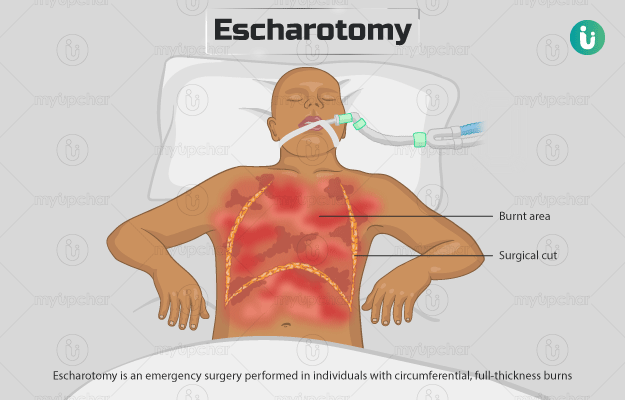Summary
Escharotomy is an emergency surgery performed in individuals with circumferential, full-thickness burns. In such people, all three layers of the skin become dry and inelastic. Also, the fluids in the subcutaneous fat layer shift to the nearby tissue space and increase tissue pressure that affects the blood circulation and respiratory mechanism of the body. During escharotomy, the surgeon makes cuts on the burnt skin to release the pressure and restore normal blood flow and respiration, thus preventing limb- and life-threatening conditions. Extensive wound care and nutritional support in the hospital is needed after the procedure. You may also need additional surgeries such as fasciotomy, skin grafting, or cosmetic surgeries to improve skin function and appearance and replace damaged skin with healthy skin. The length of your hospital stay may extend from several weeks to months, depending on the seriousness of the condition.






































